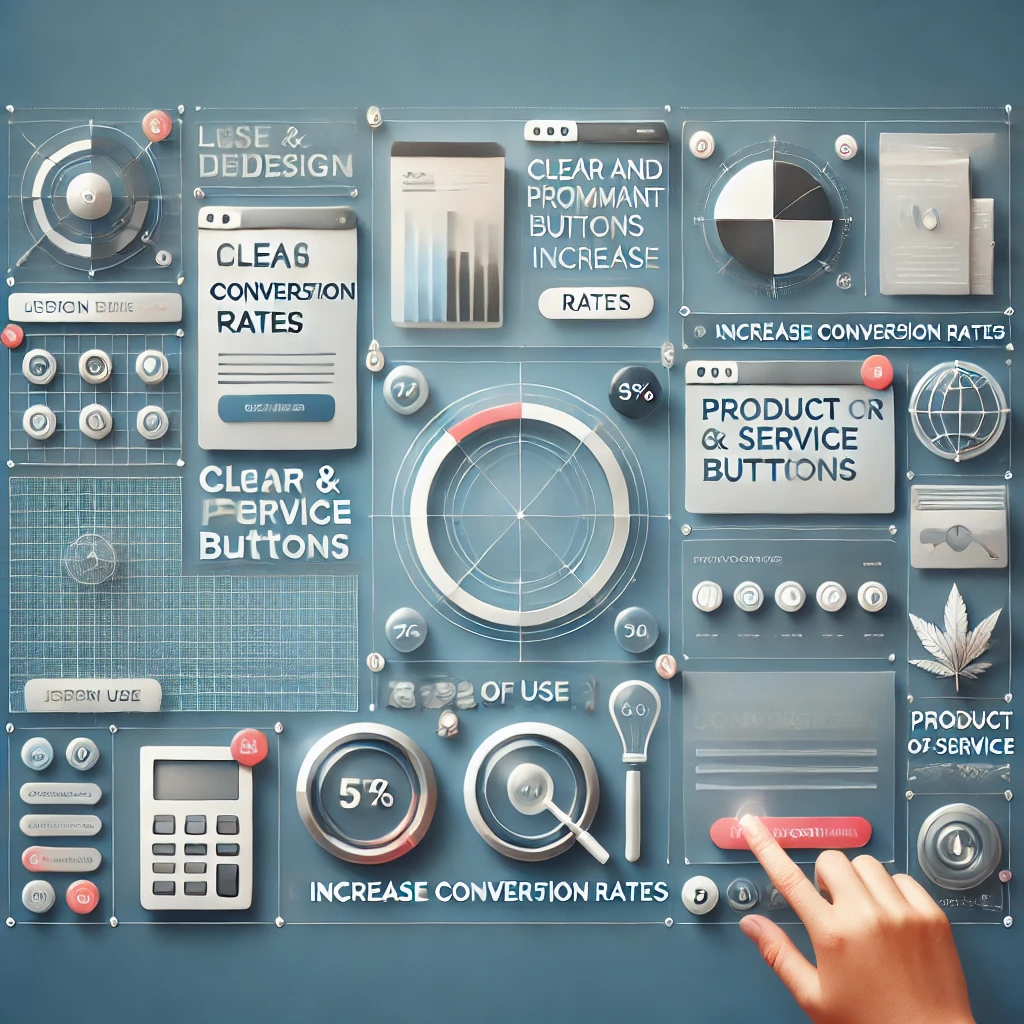A well-designed website is essential to attract users and guide them towards taking desired actions. Improving your website’s design can have a direct impact on conversion rates, boosting business outcomes. By focusing on key Web design elements, you can create a more engaging and persuasive user experience.
Clear and Compelling Call-to-Action (CTA) Buttons
One of the most critical web design elements for conversions is the call-to-action (CTA) button. A CTA button tells visitors what action to take next, such as signing up for a newsletter or making a purchase. For example, large, contrasting buttons with action-oriented text, such as “Get Started Now,” are highly effective. Transitioning visitors into customers begins with clear, well-placed CTAs, ensuring they understand the next step in the process.
Simplified and Intuitive Navigation
Navigation plays a key role in guiding users through your website, influencing how they interact with your content. If users can’t easily find what they’re looking for, they will likely leave without converting. A simple navigation bar, strategically placed at the top of your website, helps users locate essential information quickly. Adding breadcrumb navigation and organizing your site map with user experience in mind will further enhance usability.
Mobile-Friendly and Responsive Design
With mobile usage surpassing desktop, optimizing your website for mobile devices is crucial for conversion success. A responsive design ensures your site adapts seamlessly to various screen sizes, improving user experience across all platforms. Mobile users expect fast load times, so optimizing image sizes and minimizing redirects are also essential. Mobile-friendliness not only increases conversions but also boosts your SEO ranking, bringing more traffic.
High-Quality Visuals and Minimalist Layout
High-quality visuals significantly enhance user engagement and contribute to overall credibility, making visitors more likely to trust your brand. However, cluttering your design with too many elements can overwhelm users and distract them from converting. Employing a minimalist layout allows your key messages and visuals to stand out, making it easier for users to focus on the content. Incorporating ample white space around text and images also contributes to a cleaner, more professional appearance.
Trust Signals and Social Proof
Users are more likely to convert if they trust your website and brand. Including trust signals, such as security badges, customer reviews, or testimonials, reinforces credibility and reassures potential customers. Social proof, like showcasing your client logos or displaying the number of satisfied customers, creates a sense of community and trustworthiness. These elements can make users feel more confident about making a purchase or filling out a form.
By incorporating these web design elements, you will enhance user experience and ultimately drive higher conversion rates. Each element works together to create a website that not only attracts visitors but also encourages them to take action.




